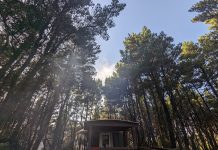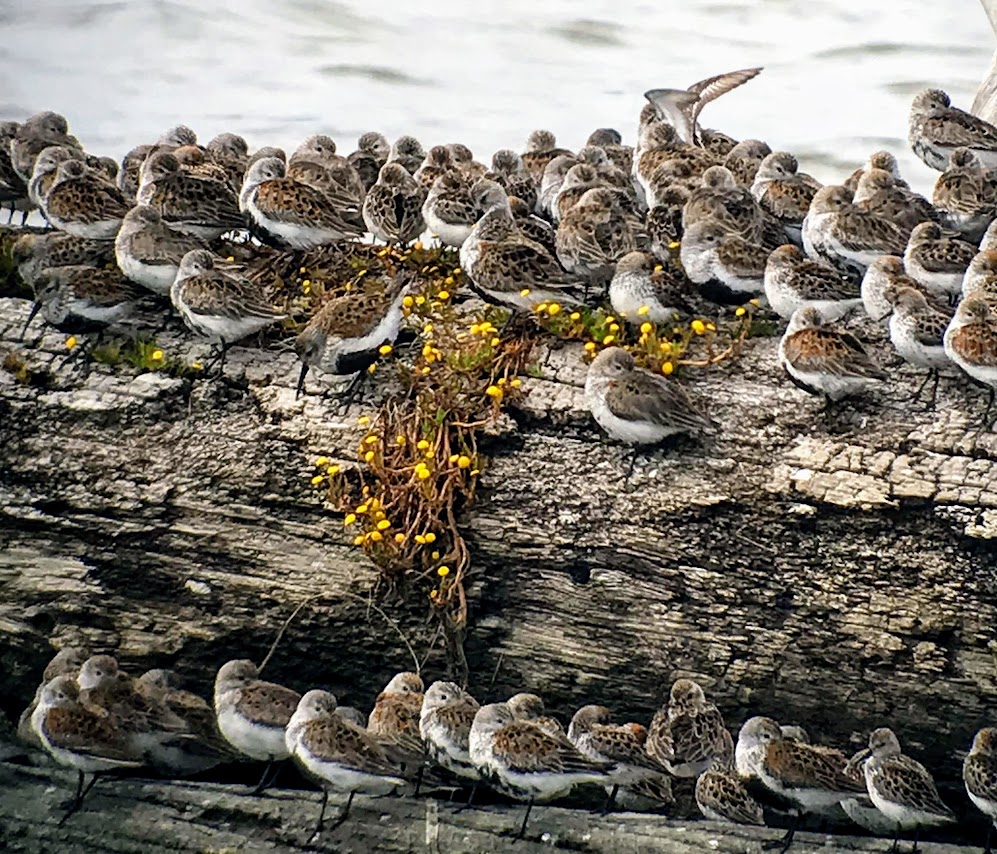Grays Harbor National Wildlife Refuge in Hoquiam is a destination for birdwatching. A self-proclaimed hidden gem, Grays Harbor County is one of six major estuary systems on the Pacific Coast and a major stopover along the Pacific Flyway.
Pacific Birds defines flyways as “life-giving, ancient pathways for birds from their breeding grounds to wintering areas.” Millions of birds follow these flyways each spring and fall, and you can find at least two dozen species of migratory waterfowl and shorebirds at the Grays Harbor National Wildlife Refuge in the shoulder seasons as they stop over along their migration route or overwinter here.
defines flyways as “life-giving, ancient pathways for birds from their breeding grounds to wintering areas.” Millions of birds follow these flyways each spring and fall, and you can find at least two dozen species of migratory waterfowl and shorebirds at the Grays Harbor National Wildlife Refuge in the shoulder seasons as they stop over along their migration route or overwinter here.
What Makes Grays Harbor National Wildlife Refuge So Special for Birds?
Four distinct natural habitats work together to create the rich, biodiverse ecosystem that is Bowerman Basin at Grays Harbor: estuary, open saltwater, salt marsh and intertidal mudflats. These unique conditions comprise almost 1500 acres, providing crucial habitat for hundreds of thousands of birds each year.
Bowerman Basin is one of the few major refueling stops along migration routes for shorebirds in the entire United States. Mudflats on the Refuge are the last in Grays Harbor to be flooded at high tide and the first to be exposed as the tide recedes, making it prime real estate for shorebirds looking for a constant supply of food to fuel their migration.
Grays Harbor National Wildlife Refuge is part of the U.S. Fish and Wildlife Department, whose primary responsibility includes the management and conservation of wildlife and their habitats. As such, The Grays Harbor Wildlife Refuge participates in numerous surveys, studies and research projects such as the Migratory Bird Program and the Pacific Flyway Shorebird Survey to monitor and assess migratory birds’ long-term population trends and behaviors.
In 1995, Grays Harbor was designated a Site of Hemispheric Importance by the Western Hemisphere Shorebird Reserve Network (WHSRN) for being a critical stopover site for over half a million shorebirds each year.
Birdwatching at Grays Harbor National Wildlife Refuge
The species of waterfowl and shorebirds you will find here vary throughout the year. Each season brings its own reward. No matter the season, you won’t be disappointed.
Spring
Spring brings a massive influx of shorebirds as birds migrating north to their breeding grounds stop over to refuel on the vast mudflats Grays Harbor has to offer. You’ll see great numbers of western sandpiper, short-billed and long-billed dowitchers, semipalmated plover, black-bellied plover, dunlin, western sandpiper, least sandpiper and red knot.
Of note is that the red knot (Calidris canutus) is listed as threatened in the United States and endangered in Mexico, and is listed in Washington as a “Species of Greatest Conservation Need” with a high vulnerability to climate change. There is ongoing research into this species.
Summer
In the summer, you can find resident songbirds such as common yellowthroat and cedar waxwings as well as many birds still on their journey northward, as different species leave the refuge at different times on their northward migrations. Fall migration also begins in mid-July, so you may see birds heading south as well.
Fall
In the fall, migratory waterfowl and large flocks of dunlin return. This brings raptors like peregrine falcons who prey on the dunlin. Watching raptors hunt shorebirds is a fascinating sight, as the large flocks of shorebirds, like sandpipers, move in unison, creating a phenomenon called a murmuration.
Winter
In the winter, migratory waterfowl are most abundant, and you can expect to see Canada geese, American wigeons, mallards and northern pintails, as well as dunlin, who overwinter at the refuge. Raptors such as red-tailed hawks, merlin, peregrine falcons, northern harriers, and bald eagles are most abundant in the winter as they hunt for their prey over the saltmarshes and mudflats.
Grays Harbor Shorebird and Nature Festival
Every spring, as hundreds of thousands of birds stop at Grays Harbor National Wildlife Refuge along their northward migration, people migrate here too for the annual Grays Harbor Shorebird and Nature Festival. Some birds travel as many as 15,000 miles from as far south as Argentina, bound for the Arctic! You can witness the phenomenon of this mass migration with your own eyes by attending the annual festival.
Visiting Grays Harbor National Wildlife Refuge
Be sure to dress for the weather and pack your binoculars when you head out to Grays Harbor National Wildlife Refuge. You might also want to check out their incredibly informative brochure before heading out, or pick up a copy at the Billy Frank Jr. Nisqually National Wildlife Refuge before you go since there is no visitor’s center at the Grays Harbor refuge. Notably, there are no bathrooms or facilities there either, so plan accordingly.
The best times for viewing shorebirds from the boardwalk are three hours before to three hours after high tide. This is because as the tide comes in, the mudflats become inundated with water. The rising or higher tides push the shorebirds into smaller and smaller exposed areas of mudflats as they search for food, resulting in a higher concentration of shorebirds in a smaller area, and the boardwalk is situated in a prime location that is exceptionally close for optimal viewing. For more information, visit the Grays Harbor National Wildlife Refuge website.
Grays Harbor National Wildlife Refuge
1000 Airport Way, Hoquiam


































